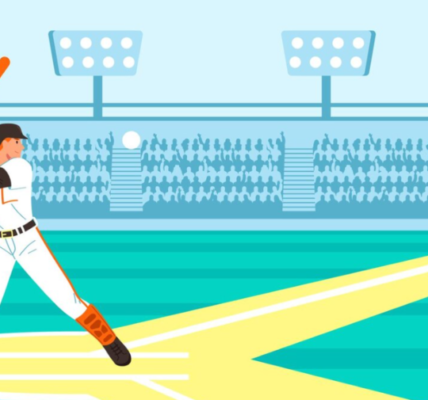In baseball, a pinch hitter is a substitute batter who replaces another player during the game. This tactical move is employed for various reasons, often to enhance offensive potential or to replace a weaker batter with a more proficient one. Understanding the role and strategic application of a pinch hitter is crucial for team success.
Strategic Considerations for Utilizing a Pinch Hitter
Pinch hitters are deployed to invigorate the offense or to prevent the loss of an out by substituting a less effective hitter. This strategy involves careful consideration of the current game situation, the abilities of available players, and the desired outcome.
Situational Analysis: When to Employ a Pinch Hitter
- Injury Scenarios: Pinch hitters are often used when a player sustains an injury, either in the field or at the plate;
- Match-up Considerations: Managers may opt for a pinch hitter if a player struggles against specific pitchers or in certain game situations;
- Tactical Adjustments: Depending on the game’s progress, pinch hitters may be used early for defensive continuity or later when batting prowess is paramount.
The Impact of Pinch Hitters on Game Dynamics
Pinch hitters can significantly influence a game, providing a strategic edge in key moments. Their ability to alter the course of an inning or game underscores their value in baseball strategy.
Guidelines for Implementing Pinch Hitting in Gameplay
Managers must adhere to league rules regarding lineup changes and communicate effectively with umpires. The decision to maintain a pinch hitter in the game post-at-bat depends on the team’s immediate and long-term needs.
Comparative Table: Traditional vs. Modern Pinch-Hitting Strategies
To augment the understanding of pinch-hitting, I’ve included a unique comparative table that distinguishes between traditional and modern strategies in employing pinch hitters. This table aims to provide readers with a clearer understanding of how the role of pinch hitters has evolved.
| Aspect | Traditional Strategy | Modern Strategy |
|---|---|---|
| Timing of Use | Primarily used in later innings for a strategic advantage | Utilized at any game point based on situational needs |
| Type of Player Selected | Often power hitters or contact hitters | Players with specific skills (e.g., bunting, power, contact) |
| Game Situation Consideration | Used mainly in close games or when trailing | Employed in various scenarios, including tactical shifts |
| Subsequent Fielding | Less emphasis on defensive capabilities | Strong consideration of defensive abilities for later innings |
| Match-up Analysis | Based on general pitcher-hitter match-ups | Detailed analytics on pitcher-hitter dynamics |
The Evolution of Pinch Hitting in Baseball
Over the past two decades, the role of the pinch hitter in baseball has evolved significantly, influenced by changes in the game’s strategies and the increased reliance on data analytics. Traditionally, pinch hitters were primarily power hitters or contact specialists brought in during critical moments, usually in the later innings of a game. Their main objective was to provide an immediate offensive boost, often in high-pressure situations. The traditional approach focused on intuitive decisions based on the manager’s experience and a general understanding of match-ups.
The modern approach to pinch-hitting, however, integrates advanced analytics, giving managers a more nuanced understanding of pitcher-hitter match-ups. This data-driven strategy considers a variety of factors, including a hitter’s performance against specific pitch types, historical success in certain situations, and current form. Additionally, the modern strategy places a greater emphasis on the pinch hitter’s defensive abilities, especially if they are expected to remain in the game.
These changes reflect a broader shift in baseball towards a more analytical and strategic approach. Managers now have access to extensive data, enabling them to make more informed decisions about when and whom to pinch-hit. This evolution in the role and strategic use of pinch hitters is a testament to baseball’s ongoing adaptation and sophistication as a sport.
Pinch Hitting: A Game-Changing Tactical Decision
The decision to use a pinch hitter can be a game-changing moment in baseball, offering a strategic advantage or altering the momentum of the game. When a manager decides to use a pinch hitter, they are essentially playing a high-stakes chess game, trying to outmaneuver the opposing team with a well-timed substitution. The choice of pinch hitter depends on various factors, including the game’s context, the specific strengths of the available players, and the match-up against the opposing pitcher.
In high-pressure situations, a pinch hitter can provide a spark to a struggling offense, deliver a crucial hit, or execute a specific play like a bunt or sacrifice fly. The psychological impact of introducing a pinch hitter can also not be understated. It signals to the opposing team that the manager is actively seeking to gain an advantage, often leading to a shift in strategy from the opposition.
The use of a pinch hitter also reflects the depth and versatility of a team’s roster. A strong bench with capable pinch hitters gives the manager more options and flexibility in responding to game situations. As such, effective pinch-hitting is not just about the individual player’s skill but also about the manager’s tactical acumen and the team’s overall strategic preparation. In this way, the use of pinch hitters encapsulates the intricate interplay of strategy, skill, and psychology that defines baseball.
Integrating Pinch Hitters into Batting Order Strategy
Understanding the strategic integration of pinch hitters within the context of batting order strategy is crucial for maximizing a team’s offensive potential. This unique section focuses on how the use of pinch hitters can be effectively woven into the overarching batting order strategy, enhancing the team’s ability to adapt to different game situations and capitalize on scoring opportunities.
In baseball, the batting order is meticulously crafted to balance power, speed, contact hitting, and on-base capabilities. The strategic use of pinch hitters can significantly alter this dynamic, offering managers a tool to adjust their strategy mid-game. For instance, a manager might replace a weaker hitter with a more specialized pinch hitter, such as a power hitter against a particular pitcher or a contact hitter in a situation that demands precision at the plate.
The decision to use a pinch hitter also depends on the current state of the game and the batting order’s position. Late in the game, when each at-bat becomes increasingly critical, a manager might opt for a pinch hitter with a proven track record in high-pressure situations. Alternatively, in the earlier innings, a manager could use a pinch hitter to prevent the opposition from settling into a rhythm or to counter a specific pitcher’s strengths.
Furthermore, the use of pinch hitters must be balanced with considerations for subsequent innings, particularly in leagues with strict re-entry rules. A pinch hitter used early in the game might need to play defensively later, requiring a player with well-rounded skills. Conversely, a late-game pinch hitter might be chosen solely for their batting prowess, with less emphasis on fielding ability.
Video Guide
To answer all your questions, we have prepared a video for you. Enjoy watching it!
Conclusion
Effectively leveraging pinch hitters can be instrumental in a team’s success. This role, while often overlooked, plays a pivotal part in the strategic layering of baseball, offering managers a tool to adapt to dynamic game situations and optimize outcomes.




